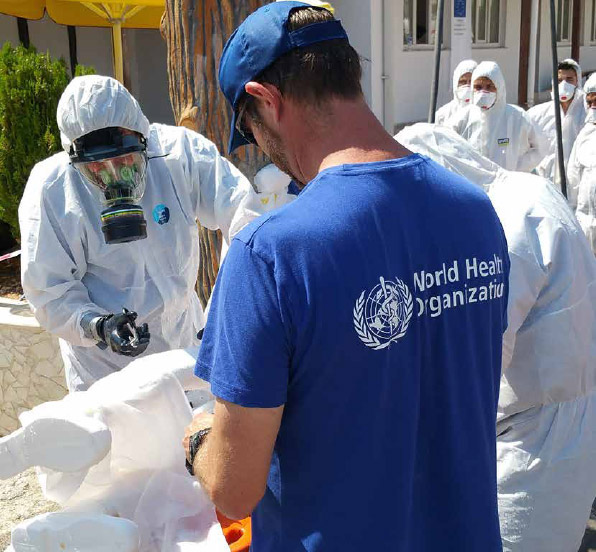WHO’s preparedness for chemical events focused on the two regions that saw the greatest number of hostilities in 2019: the northeast and the northwest. A total of 628 health workers in Idleb and Aleppo were trained on responding to chemical events, while approximately 450 clinicians and health workers in the governorates of Aleppo, As-Sweida, Damascus, Hama, Homs, Lattakia and Tartous received advanced bio-chemical training. WHO developed online and print guides in Arabic and Kurdish on the clinical management of chemical events and distributed them to health facilities in the northeast. In the northwest, 18 referral hospitals were provided with 2000 sets of PPE and essential medicines and antidotes.
WHO paid special attention to its staff working in hazardous areas. It stocked staff protection algorithms and chemical escape kits in all WHO offices and vehicles, and pre-positioned 500 sets of PPE, medicines, supplies and antidotes. Medical staff continued as in previous years to be trained on types of commonly used chemical weapons, chemical exposure, trauma care and how to provide a sound public health response to the health consequences of chemical exposure. In addition, WHO senior personnel participated in a training-of-trainers course in Amman on chemical exposure and trauma care.



